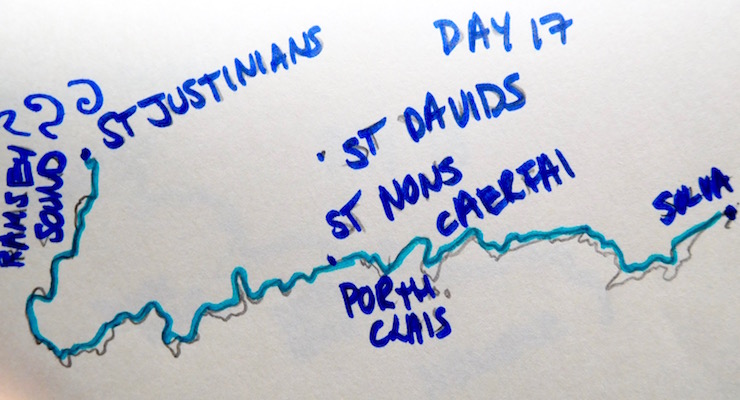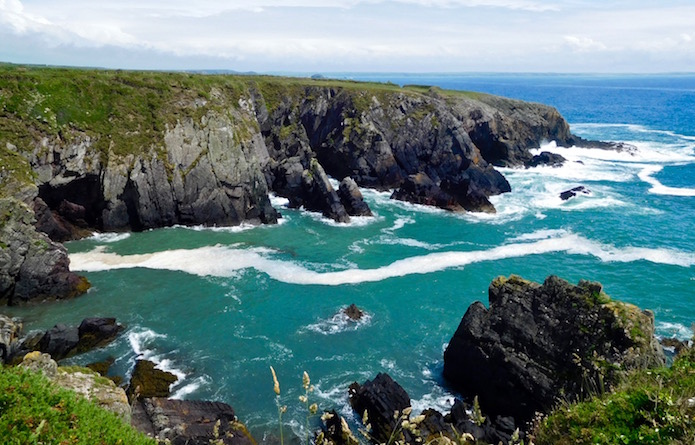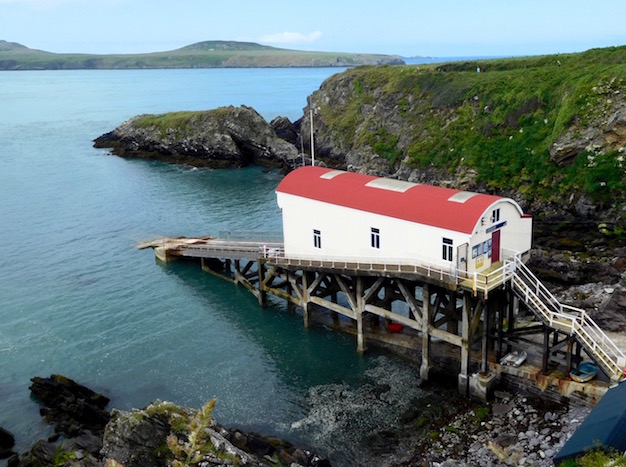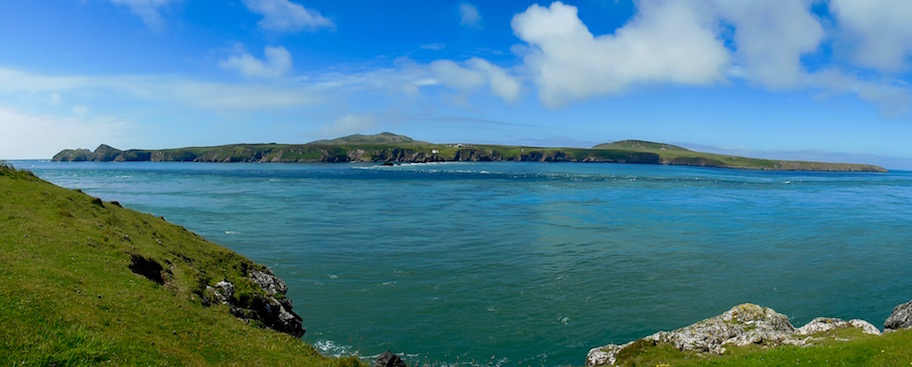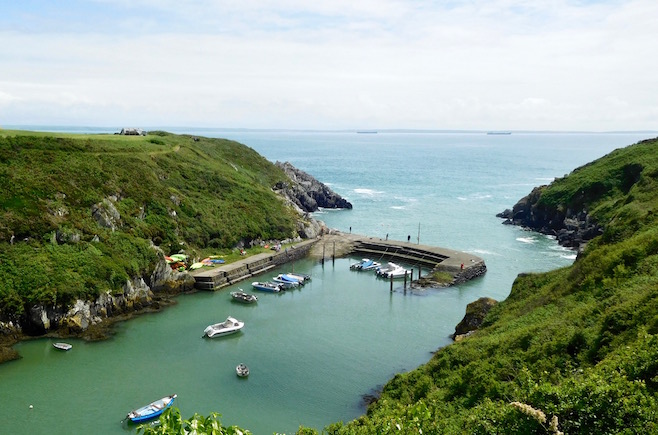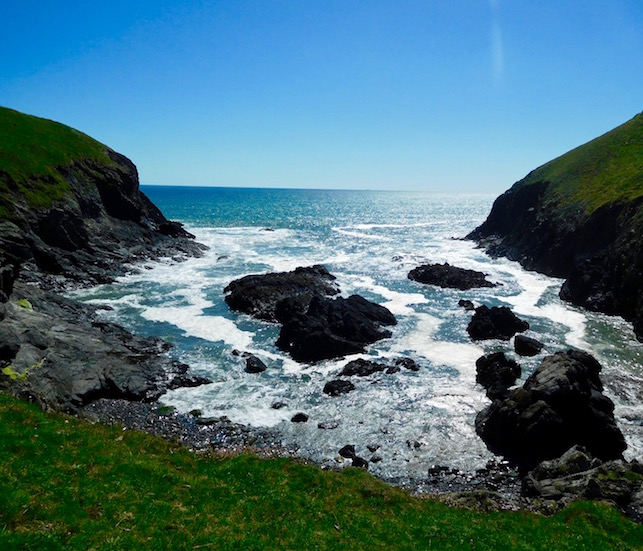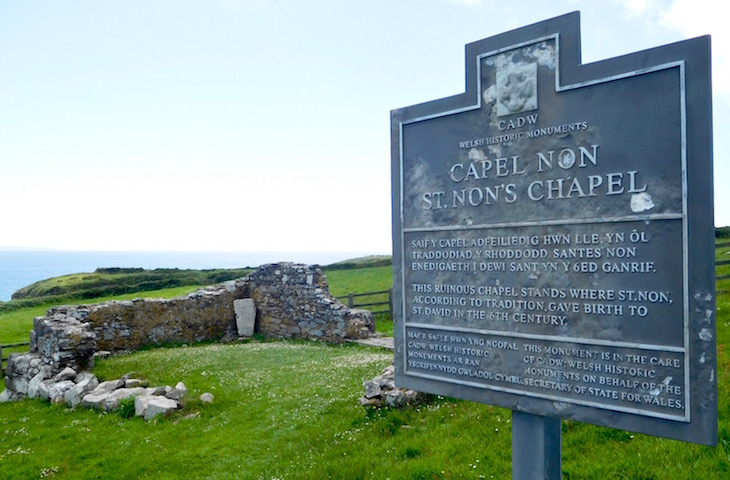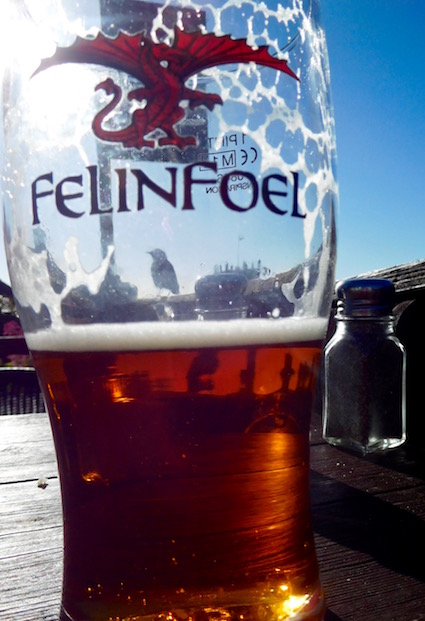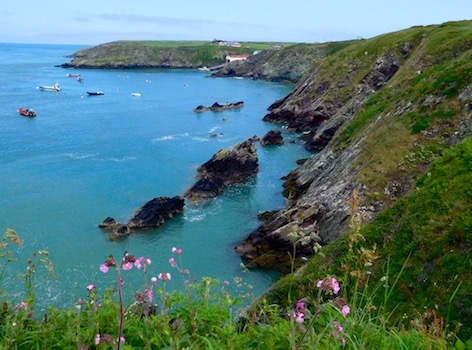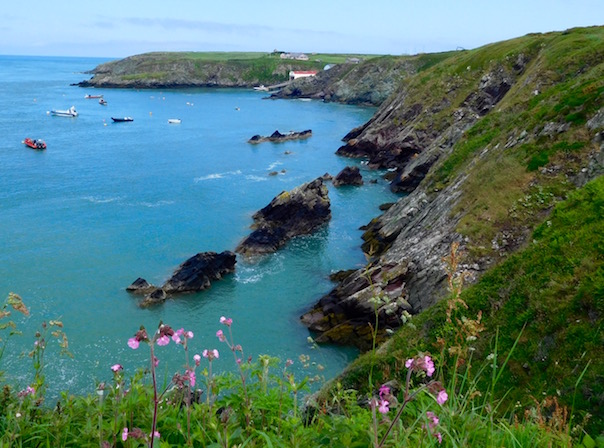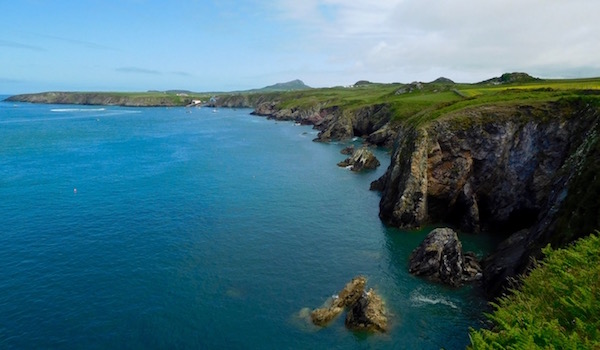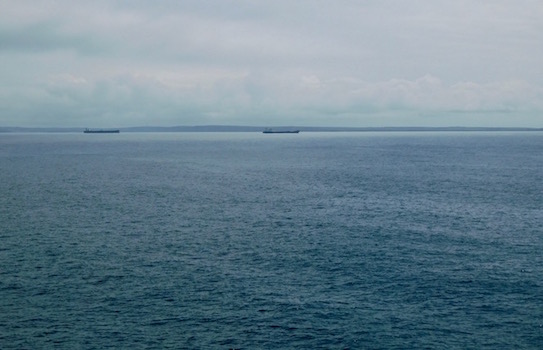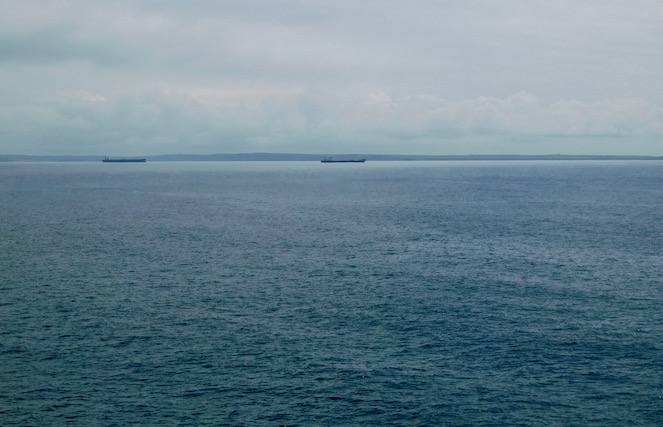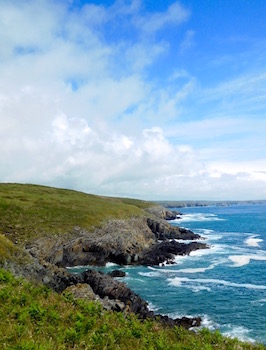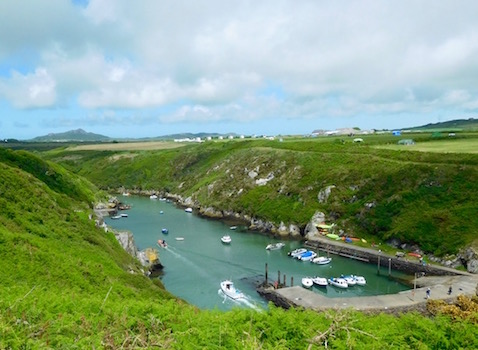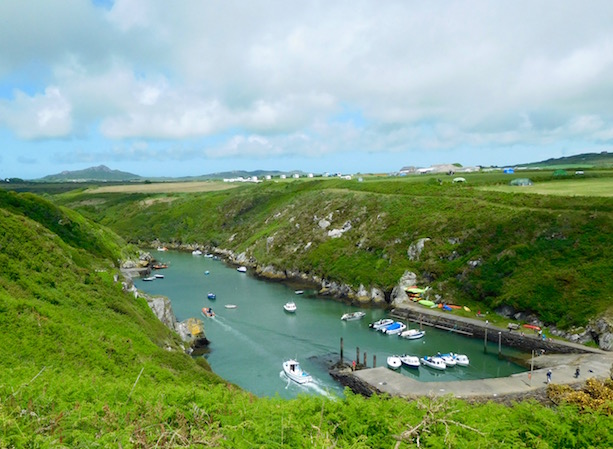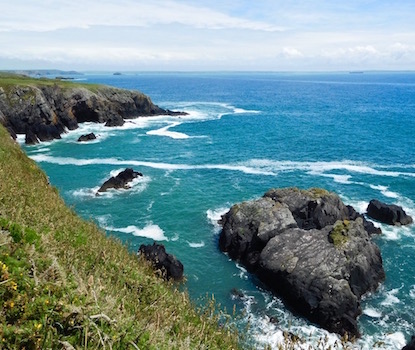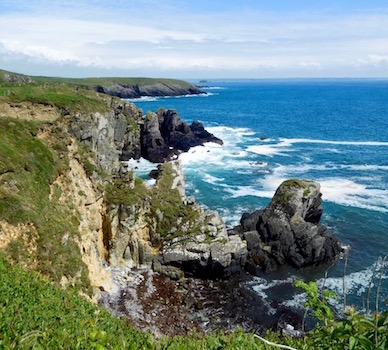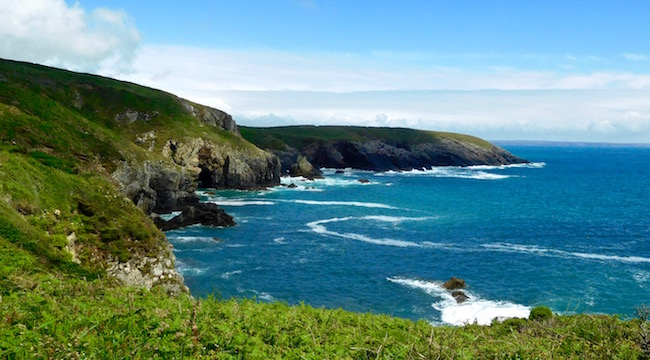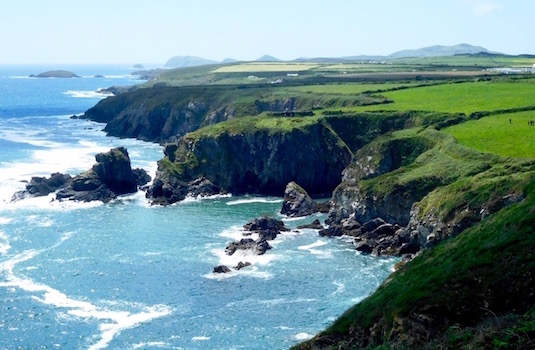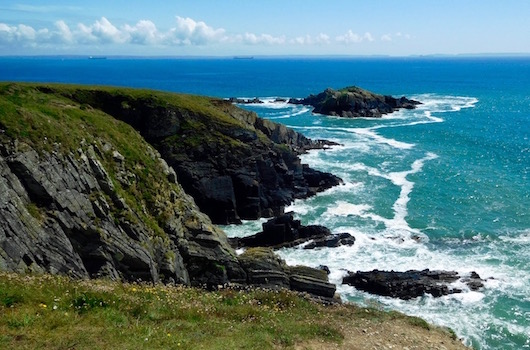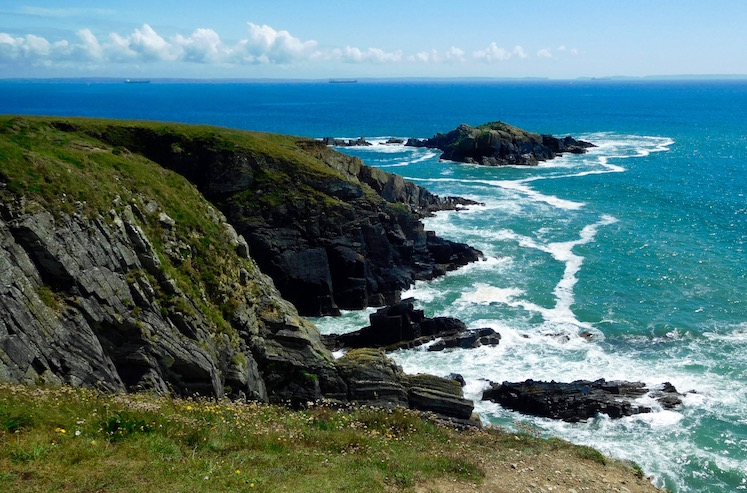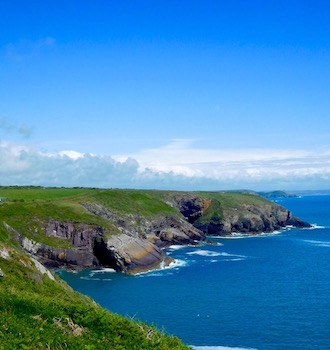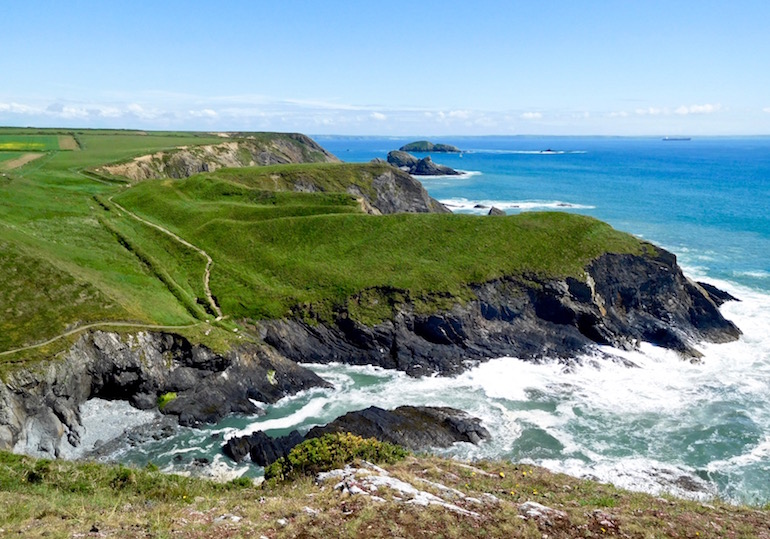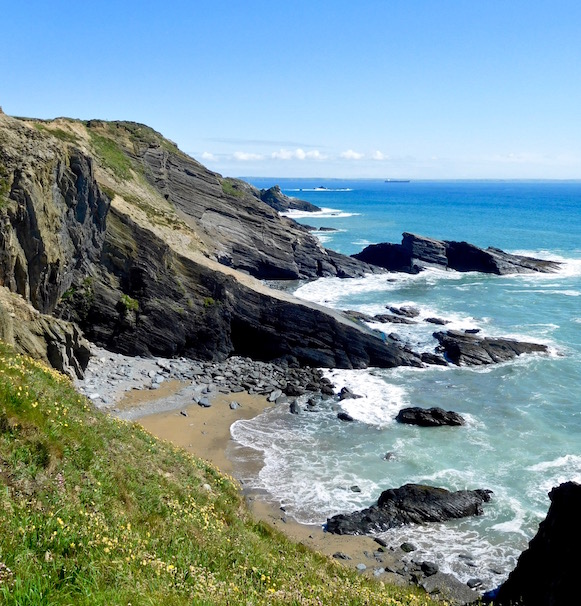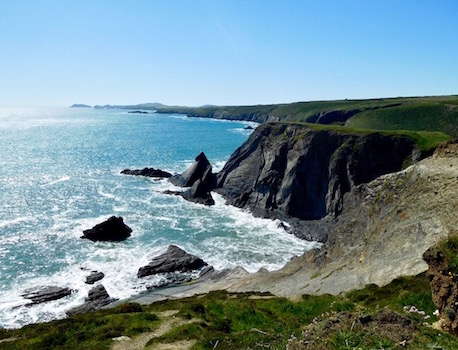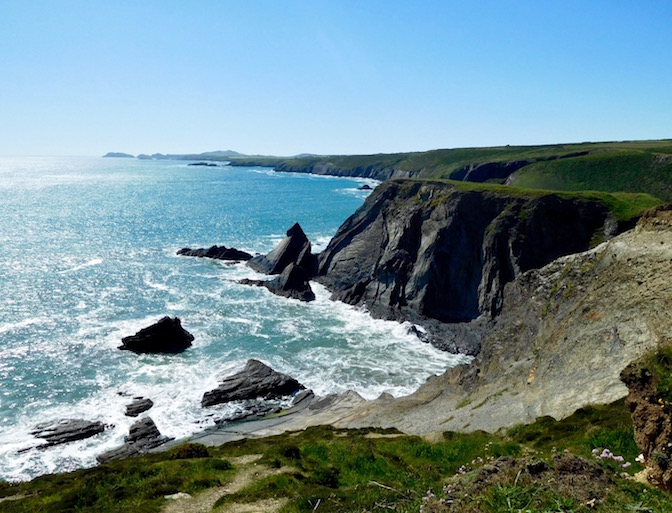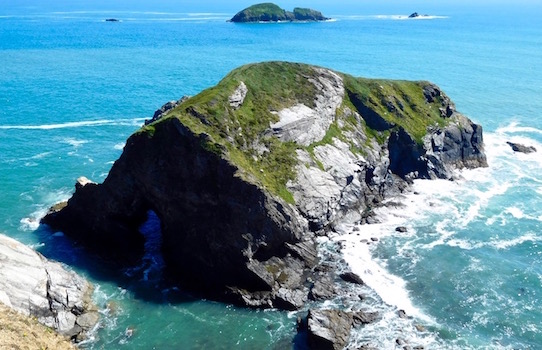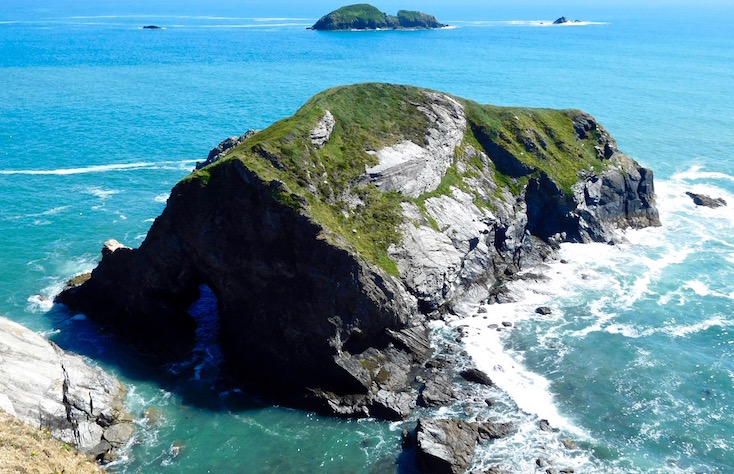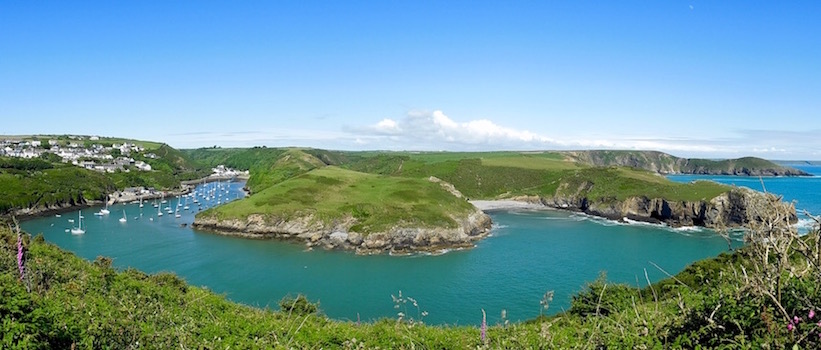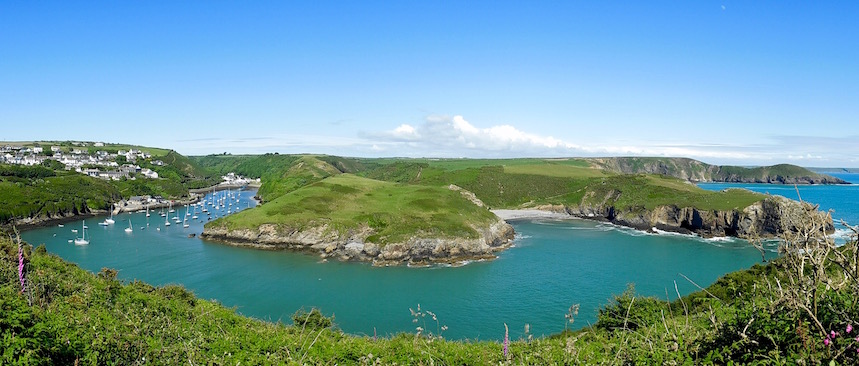Day 17
St. Justinians to Solva: 10.5 miles
Admission of the day: I've had four drinks today.
Reason: I was thirsty. Also my AirBnB host opened a bottle of wine while watching Question Time with Teresa May and Jeremy Corbyn, so it really wasn't my fault. The second two anyway. Stop judging me.
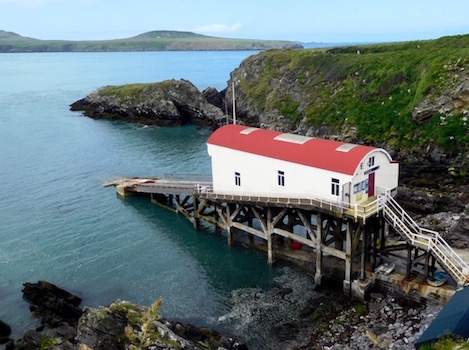
More lovely views, more inlets, more saints
So today's walk took me from St. Justinian's all the way down to Solva. After the Celtic Coaster bus/van ride down the narrow hedge rowed roads that require passing traffic to stop and back into driveways to allow the bus to get through, the windy undulating path seemed easy enough.
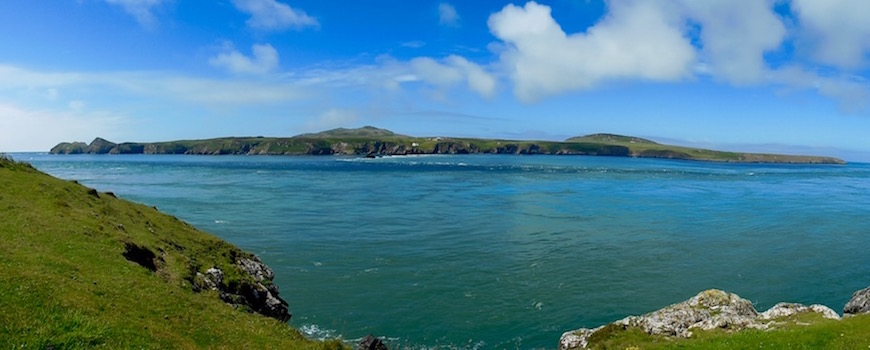
Now that the weather had cleared, the views out to Ramsey and the swirling water of the channel were striking, and each corner brought a new picture postcard - that of course I had to take 50 pictures of.
There was a certain point, however, where the path finally cut around the edge of the peninsula, so now I was walking east rather than south - and something weird happened. I looked up like I heard a loud noise - because suddenly there was no noise. As the path had turned, it cut out the sound of the rushing water of the channel that apparently I'd been hearing but not noticing for some time - like when a person who's used to the 5am train going past their house wakes up with a start when it doesn't go past.
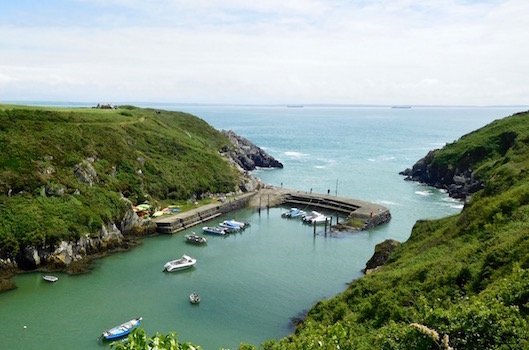
Surprised out of my reverie, I looked up and saw the lovely sweep of St. Bride's Bay. But with the long views came a surprising/not surprising if you know anything about the Welsh coast/ view - four giant oil tankers sitting off in the distance. They were really very, very far away - but I've gotten used to the wild west coast of Wales, where the biggest boats I've seen have been some rather small fishing trawlers, and you're more likely to see a dinghy than even a motor boat.
Looking further past where they were lined up, I could just make out the stacks of oil refineries - again waaaay off in the distance only visible from several coasts away because the visibility was so good today. From this distance it seems there's still plenty of actual pleasant scenery to walk through in the area - which my hosts have confirmed is gorgeous, but it's been suggested I just 'skip' certain areas because the only view is of oil refineries, and, unfortunately there's apparently a noticeable smell.

Of course, I won't be skipping that area, I feel like it's important to recognize that the neoprene wetsuit you rely on to enjoy the gorgeous coastline comes from somewhere where you've kind of destroyed the view to make the neoprene. Well, oil-based neoprene as opposed to limestone-based anyway.
So I'll get there when I get there, and I'm sure the industry will be just charming. For now, I suddenly came upon several bays and inlets, some with limekilns and some more wild. Caerfai Bay - where the stone for St. David's cathedral was quarried (I talk more about that in tomorrow's post) was particularly charming, and there were great views of green and different shades of blue all around.

And of course, there were saints, saints, everywhere. In this case, you can visit the remains of St. Non's chapel. Non (or Nonna) was the mother of St. David (again, more on him tomorrow, and this hillside chapel was placed where she gave birth to David, apparently during the height of a storm. She had been living as a nun, but was raped by a Prince of Ceredigion. David's birth was said to have been so violent that a rock she was touching cracked and bore the imprint of her hand - the rock used to sit in the remains but isn't there anymore. Also, suddenly after the birth a well spontaneously formed to wash the baby in.
In any case, the remains are thought to be one of the oldest Christian sites in all of Wales and used to be visited often as part of the pilgrimage to St. David's. There's still a holy well there that's thought to have healing powers - and also several standing stones that may be evidence of an even earlier Iron Age settlement in the area.
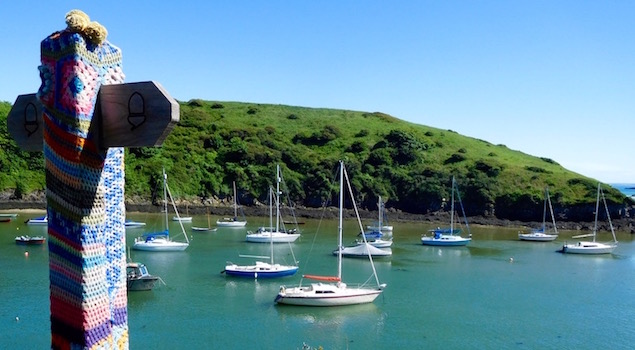
So basically, there's a lot going on here. The setting was also really beautiful, and the rest of the walk to Solva was pretty enjoyable. Walking into Solva itself was particularly nice, as it's an adorable old-inn filled town that sort of cascades down into a sheltered bay. This is the area where a lot of the names derive from old Norse words - Solva, Ramsey, Skomer, etc - because the Vikings would raid and plunder this shoreline regularly in the 9th century.
A more recent fun fact is that this was one of the main ports where Welsh people would sail to America in the 19th century - apparently you could get a booking for 4 pounds. Nowadays it's a charming little harbor filled with small skiffs, a cafe, and a main street of brightly colored old inns with beer gardens, a local pottery shop and a bit of local arts and crafts shopping.
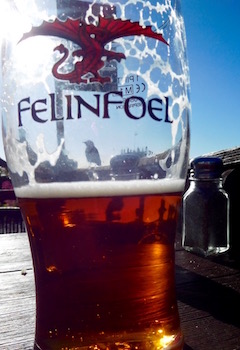
It was a perfectly lovely place to while away an hour of waiting for the bus with a cider in a river-side beer garden, complete with small dog who insisted on playing fetch with a rock with me for 30 minutes. Nothing like a dog insistently dropping a rock on your leg and poking you with it's nose over and over again to end the day (actually he was pretty cute).

